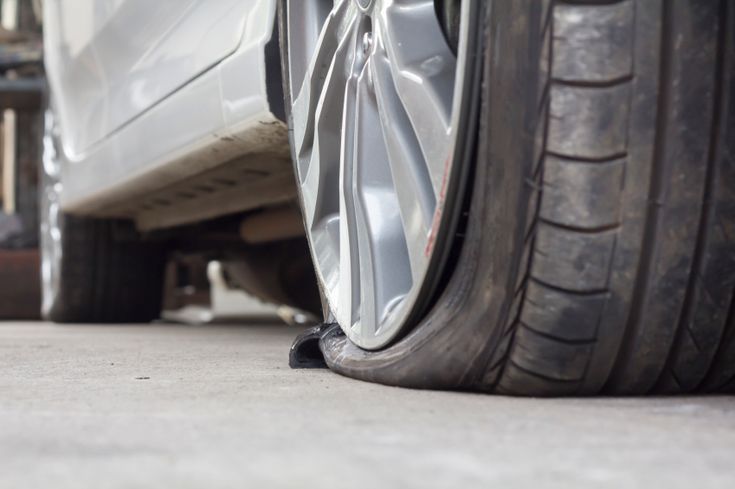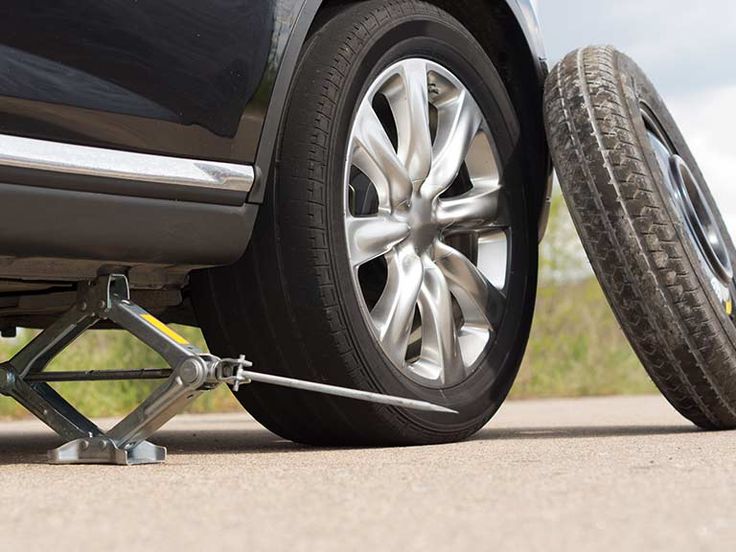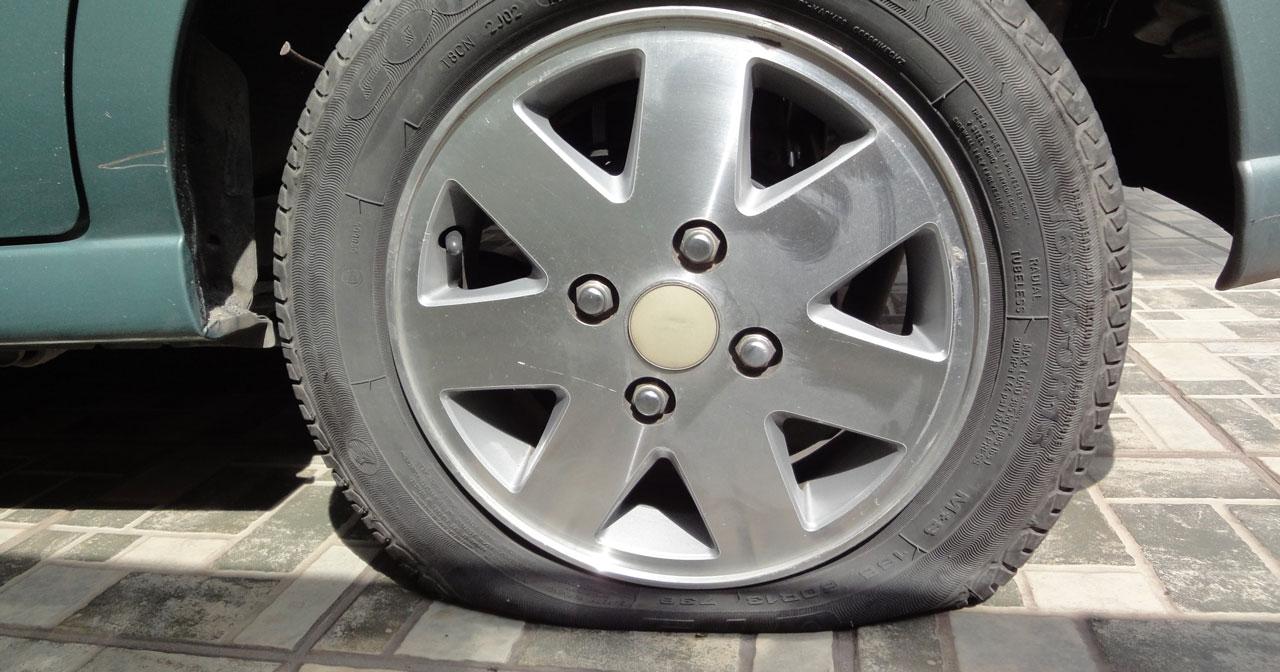A flat tire is a problem that drivers face on a regular basis. If you drive your own car, you should have good knowledge about how to fix a flat tire on a car because a good spare may not be available all the time.
Moreover, fixing a flat tire is not that much of a difficult job. It requires you to be a little meticulous, then everything will go smoothie.
There are a few ways how to repair a flat tire, and most of them are pretty straightforward and don’t require more than a few tools to fix a flat tire.
Contents
What Causes a Flat Tire
So before going to know how to fix a flat tire, let’s take a look at the most common reason behind the flat tire.
As a driver, at least one time in your driving life, you face a flat tire. If you’ve been in this unfortunate situation, you know the sinking feeling of seeing your vehicle suffering. The most common causes of a flat tire are:

1. Puncture by sharp object
It is common to have sharp objects on the road and the chances to meet them are unpredictable. So avoid puncture blowouts by driving around debris on the road or in parking lots whenever possible.
2. Failure or damage to the valve stem
The valve stem is the tiny protrusion from your tire that you unscrew when you need to inflate it. A damaged or corroded valve stem can cause air to leak out of the tire, making it go flat. So loose or dirt-clogged stems will cause tires to lose air.
3. Rubbed or ripped tire
Since the ripped tire will lead to the result of the leaking air from the tire. Therefore the tire is flat and creates a dangerous situation for you and other drivers. So make sure that you will check the tire frequently such as deeply scuffed or worn areas or uneven wear on one side of the tire.
4. Vandalism
Vandalism includes someone letting the air out of your tire. It is easily remedied and will not result in the need for a replacement: simply reflate the tire. You should also be careful when parking in the future.
5. Over pumped tires
It sounds crazy but it is true that if you over-pump your tires, there is a chance that the tire will be flattened. An over-pumped tire can create a dangerous pressure situation, often resulting in a blowout.
6. Alloy wheel leaks
It is recommended that you check the tire pressure frequently. If leakage becomes a recurring problem, bring your car to a mechanic for a professional fix.
7. Road hazards
There are many problems on the road that drivers cannot think of. Potholes, uneven roads, and unexpected debris can wreak havoc on your car’s wheels, axles, and undercarriage.
8. The tire and rim separate with another object
When your tire pops a curb or if you rub the wheel sharply against the sidewalk while parking, the separation will happen. The tire slips slightly from the rim, causing a slow loss of air over time.
9. Unexpected damage
In many cases, you cannot prevent the flat tire because of some unexpected thing that happens. If you experience an unexpected blowout on the road: don’t slam on the brakes, allow the car to slow naturally while steering to the side of the road, turn on your hazard lights, and call for help.
That is all about what causes the flat tire, now, let’s move on to how to fix a flat tire!
How To Fix a Flat Tire: Step by Step Instructions

Having a punctured or flat tire is an annoying problem. However, as it happens now and again, you should learn a way or two about how to fix a flat tire. Let’s take a look at how to fix a flat tire on a car by using a tire plug kit:
1. Find the leak
It’s the first step on how to fix a flat tire. Take a close look at the tire to see if there’s a nail or something sharp sticking out of it or if there are any holes or cuts. If the visible inspection does not help, inflate the tire to the appropriate pressure level and see if there’s a hissing sound.
If nothing works, mix some dish soap with water and brush or spray the mixture on the tire. There will be bubbles in the leaking area. Mark the spot with tape.
2. Loosen the lug nuts and jack the car up
In the next step of how to fix a flat tire, you have to loosen the lug nuts with an impact wrench or a lug wrench. Remember to do it before jacking up the car. Otherwise, it can spin dangerously at the time of removing the nuts.
Now, it’s time to jack up the car so that you can remove the wheels. Do it by keeping your car on a concrete or hard surface and must use jack stands to keep the vehicle stabilized.
3. Remove the lug nuts and clean the hole
It’s time to remove the lug nuts completely and pull off the wheel of the wheelbase. After that, clean the leaking area by inserting the rasp tool (included in the kit) in an out of the hole a few times.
Read more:
4. Insert the plug
Thread the plug in the middle of the insertion tool and push it into the hole. You can lubricate the plug with an adhesive such glue or rubber cement for easy insertion and a better seal.
Don’t move the plug at least for one minute to let the adhesive set and dry. Cut out the part of the plug protruding from the tire surface.
5. Inflate the tire
Fill the tire with air at the recommended air pressure. Now, re-install the wheel, remove the floor jack, and attach and tighten the lugs to the proper torque.
As you have learned how to fix a flat tire on a car, you can carry out the entire process at your home.
However, remember that repairing a tire using a plug is not a permanent solution. You should take the tire to an auto repair shop to patch it up professionally or replace it before driving it for another 20,000 miles.
We have just introduced to you the best way to fix a flat tire. As you can see, it is not that difficult a job, so you can do it by yourself if you’re out of help or if you want to do it at home.
You can also check the video below, which shows you the way of repairing a flat tire. Check it out!
Guide To Replace A Flat Tire
If fixing a flat tire is not an effective way for you in this situation, the answer to the question of how to fix a flat tire is replacing the new tire. Here are 2 easy steps to help that you can follow.
Step 1: Removing the flat tire
The first thing you need in this step is a lug wrench for loosening the lug nuts on your flat tire. After you loosen all the nuts (but do not remove them yet), next is situating a car jack to the suggested jacking points for your car, then use this jack to up the car side that you are working on.
Also to prevent your car from rolling, you must do this on level ground. Bear in mind that jacking your car on a slope can cause many dangerous accidents. After jacking up your car, it’s time for you to remove the lug nuts, and then take the flat tire off.
Step 2: Attaching the spare
Using the spare wheel to replace the flat tire. Before attaching the spare, you should spend a couple of minutes to check the condition of the spare again, and make sure that it is the same size as the one you are replacing.
Why do you have to do this? Well, driving a car with 3 summer tires and 1 winter tire for any significant period of time will cause many annoying troubles, that is what we don’t want to face.
When checking the spare wheel is done, next is reattaching the lug nuts to the bolts (but do not fully use them). Then you lower the car jack until all the weight of the vehicle is back on the tire. Next is removing the car jack and locking down the lug nuts.
Notice: Although you can drive your beloved car again with a spare wheel, the spare is not manufactured for long-driving purposes.
Therefore, you should drive your car under 50 mph when using a temporary spare and seek an auto repair shop to get a tire replaced by a mechanic.
Do Not Rely On Your Spare Tire
In the modern social days, it’s become less and less common for new vehicles to come equipped with a full-size spare tire.
Space savers are only designed to get you a very short distance at very low speeds—across town to the tire shop, basically. You should avoid using a space saver on a dirt road or trail if at all possible.
In case you have a full-size spare with a matching tire and wheel, it’s still possible to puncture more than one tire at a time. So if you are not prepared or if it happens somewhere you can not easily call for help, it will be a big problem.
Why Is It Important To Get Your Tire Repair?
If you’re driving on a tire that continuously loses air or has a puncture, it is very important to your safety to have it inspected immediately. A service professional should inspect the inside and out to determine whether tire repair is possible or if it needs to be replaced.
Fixing a flat car in time will help to properly repair punctures in the tread, preventing further tire damage. It also helps to maintain tire air pressure at the manufacturer’s recommended levels.
In the case that the repair is impossible, the replacement is recommended to avoid bad damage to your car. It is the situation when you notice a bulge or a blister on the sidewall of a tire, you should replace that tire immediately.
These are signs that lead to tire failure and could be dangerous. Or when a tire has gone flat due to a blowout, that tire should be immediately replaced.
In other cases, if the tire has suffered from lacerations or other significant damage, you should replace the tire immediately rather than attempting to fix a flat tire.
Sum Up
Hopefully after reading this article, besides knowing about how to fix a flat tire, you will get to know how to replace a flat tire in a safe way.
If you have any questions related to how to fix a flat tire or car knowledge, feel free to leave us a comment below, our auto experts will answer it for you.
And do not forget to read other maintenance tips to better understand your car and know how to fix it when needed.




Thanks Tsukasa for such a beautiful post. Having a flat tire is one of the major inconveniences of driving. When a good spare is unavailable, you either have to call a tow truck or fix the tire yourself. Luckily, the process of fixing it yourself is relatively straightforward and requires only a few tools. You describe the tools details beautifully and clearly. It’s cool to understand.